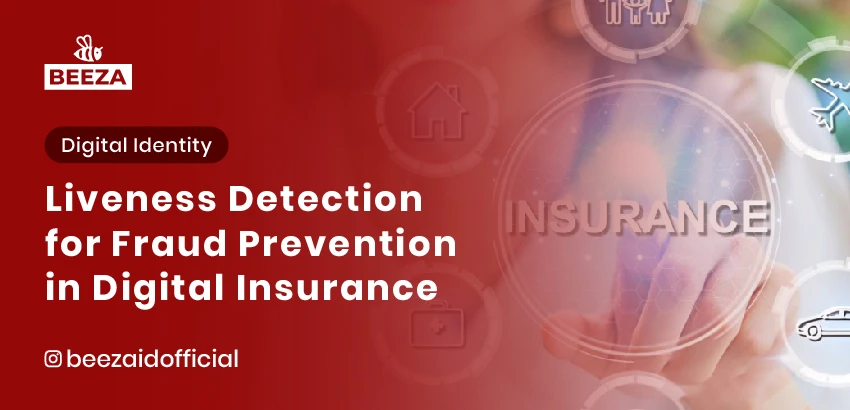
As digital technology continues to advance, the insurance industry is increasingly shifting to digital platforms to offer faster and more efficient services. However, this shift also brings new challenges, especially related to digital fraud. Identity fraud, including the use of fake photos and videos, has become a major issue in this sector. This is why it is critical for the insurance industry to adopt advanced technologies such as liveness detection.
Liveness detection is a biometric technology designed to ensure that users interacting with a system are real humans and not manipulated images or videos. This technology provides an effective solution to prevent identity fraud, maintain data integrity, and increase customer trust in digital insurance platforms.
Why is Identity Fraud a Serious Problem?
Identity fraud can severely disrupt digital systems across various sectors, and insurance is no exception. Here are some reasons why identity fraud is a significant problem in the insurance industry:
- Financial Losses: Fake claims can result in significant financial losses for insurance companies. This fraud not only harms the companies but also raises premiums for legitimate customers.
- Reputation Damage: If an insurance company fails to detect fraud, it can damage customer trust and reduce their market share.
- Regulatory Compliance Challenges: Many countries have strict regulations regarding personal data protection. If customer identities are falsified and data is not adequately secured, insurance companies can face hefty penalties or fines.
How Does Liveness Detection Help?
Liveness detection addresses the issue of identity fraud by ensuring that the user involved in a claim or transaction is a legitimate person. Here’s how this technology works in the insurance sector:
- Dynamic Face Recognition: Users are asked to perform specific actions, such as blinking or moving their head, to prove they are a real person. These movements are difficult to fake using photos or videos.
- Biometric Scanners: Liveness detection uses biometric sensors like facial recognition or fingerprint scanning that can validate someone’s identity based on physical traits that cannot be replicated by software.
- Fake Photo or Video Detection: This technology can analyze images to detect signs of manipulation, such as altered facial textures caused by editing apps or video manipulation tools.
Benefits of Using Liveness Detection in Digital Insurance
Adopting liveness detection in the insurance sector provides several key benefits:
- Stronger Security: Ensures that the identity of users involved in claims or transactions is legitimate.
- Seamless User Experience: The system remains user-friendly and quick, ensuring that the claims or insurance application process is not disrupted.
- Regulatory Compliance: With this technology, companies can meet stringent regulations related to data protection and digital identity.
- Increased Customer Trust: Enhances customer trust in digital insurance platforms, leading to higher customer loyalty.
Case Study: Implementing Liveness Detection Technology
Problem
A large digital insurance company faced a significant rise in fraudulent claims. Many claims were submitted using seemingly legitimate photos and videos, but upon closer inspection, it was found that these images had been sourced from unauthorized platforms. This led to substantial financial losses and a decline in customer trust in their service.
Technological Solution
To tackle this problem, the company decided to implement an AI-powered liveness detection system. The steps taken included:
- Dynamic Facial Recognition: Claimants were asked to perform specific actions, such as facial movements, to prove they were real individuals.
- Monitoring Suspicious Activities: The system detected unusual patterns in the verification process, such as attempts to disguise oneself using videos sourced from the internet, prompting the security team to conduct further checks.
- Layered Verification: In addition to liveness detection, the company also implemented two-factor authentication (2FA) to ensure that all claims or applications were legitimate.
Results
After implementing the liveness detection technology, the company saw:
- Reduced Fraud: Fraudulent claims were reduced by up to 85% due to the system’s ability to accurately detect fake identities.
- Faster Claim Processing: With quicker verifications, customers no longer felt that the claim process was unnecessarily delayed.
- Increased Customer Satisfaction: Customers felt more secure and confident in using the digital services, leading to improved customer retention.
Conclusion
Liveness detection is an advanced solution that provides higher security for identifying and preventing fraud in digital insurance platforms. By verifying that the user is a real person, this technology reduces the risk of fraud and offers a safer, more trustworthy experience for customers.Want to learn more about improving digital identity security for your insurance business? Contact us for the best solutions!